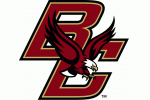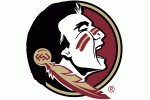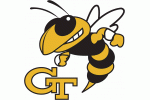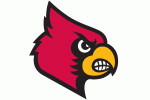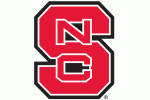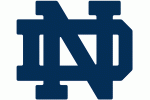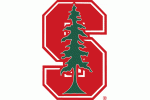The Heels fumbled quite often in 2015, but fortunately, were able to recover most of their fumbles. Here's what happened and how the team might be getting better in 2016.
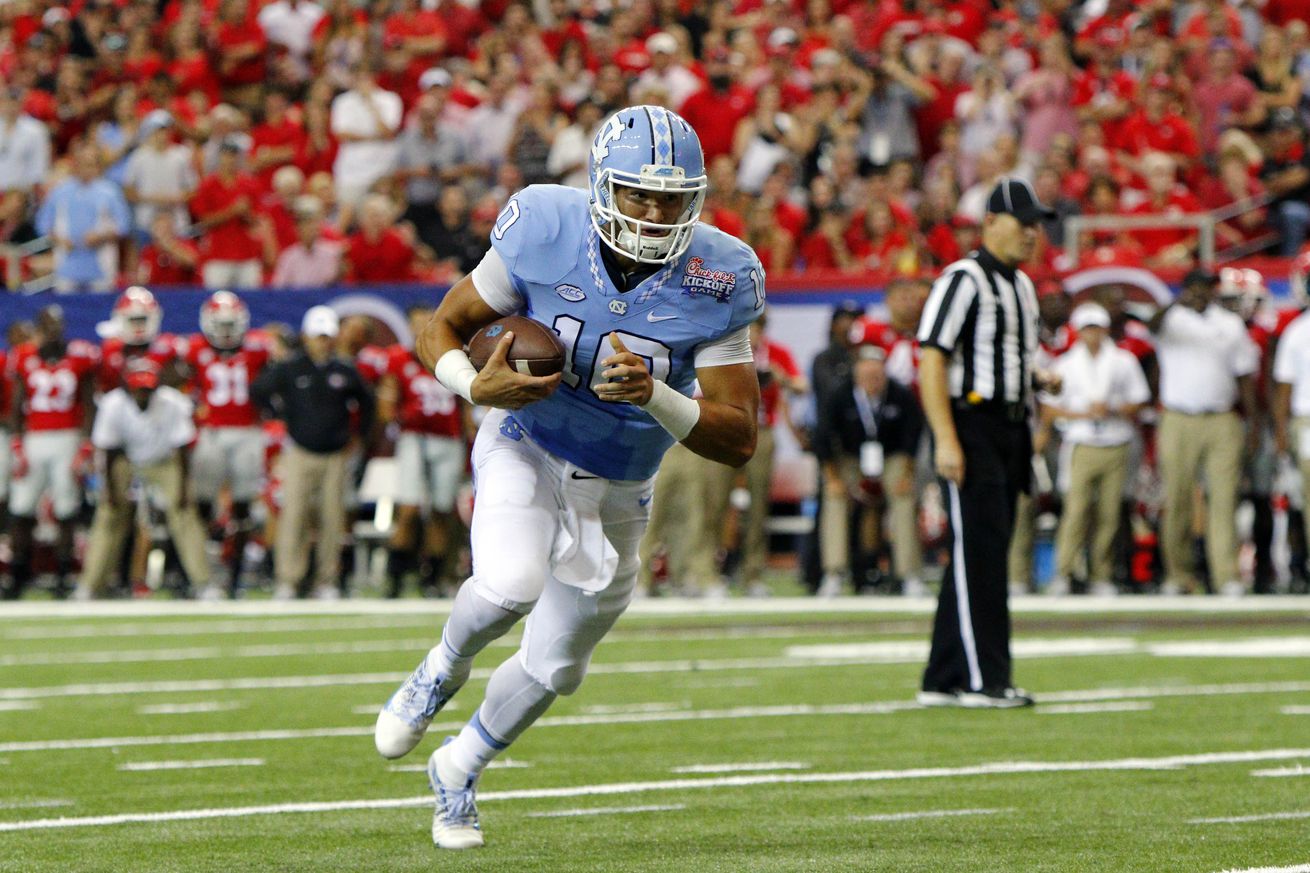
One of the more frustrating things about football is that one of its most consistent predictors of success happens to be determined by one of the most inconsistent statistics in the sport. That predictor is turnover margin, and that statistic is, naturally, turnovers.
It's already been documented here at THB that UNC needs to win the turnover battle to win, which is true for a lot of teams. Here is a study of how turnover margin correlated to wins in college football from 2009-2012. The main highlight:
/cdn0.vox-cdn.com/uploads/chorus_asset/file/7041601/ScreenShot240.0.png)
According to the article,
The R squared (coefficient of determination) for the trendline shown in the chart is 37%, meaning that turnovers "explain" 37% of the win total data in this model.
Those familiar with statistics may realize that an R squared value of 37% is quite low, but it is much higher than that of most basic football statistics and thus should be taken seriously.
Also, interesting factoid from that article: UNC was one of the 20 biggest overachievers regarding turnover margin vs win percentage from 2009-2012, winning an average of 0.7 games per season more than the average number of wins for their turnover margin.
But we knew all this already, and the results of UNC reducing turnovers on the offensive end and increasing them on the defensive end were made very clear in the transition from 2014 to 2015. So why, then, do I bring all this up?
Well, the Heels didn't quite cut down on turnovers the way you'd like. Marquise Williams actually threw more interceptions in 2015 than 2014, on fewer attempts to boot. The offense also fumbled more often, 27 times in 2015 to 23 times in 2014. The difference was in recoveries: out of 27 fumbles in 2015, the offense recovered 18 (67%). Out of 23 fumbles in 2014, the offense recovered only 13 (56%). First of all, 27 and 23 fumbles in 14 and 13 games respectively? That's almost two fumbles a game, and that is unacceptable.
Now, check out this article. UNC was one of only 13 college football teams in the country to recover 60% or more of the fumbles in their games in 2015. For teams across the nation, the percentage of fumbles recovered centered around almost exactly 50%. This means exactly what it seems like: fumble recoveries are essentially totally random. And, if you know anything about statistics, you know what that means for teams that are significantly above or below 50/50 in random metrics: regression to the mean. UNC cannot expect to keep fumbling the ball the way they have been the last two years and maintain a positive turnover margin.
Personally, the first thing I look at for a team that fumbles a lot is how the runners are carrying the ball. If the ball isn't high and tight, it's easier to be jarred loose. So let's take a look at UNC's primary runners in 2015, Elijah Hood and Marquise Williams.
Hood's carrying form is just about textbook. The ball is almost always secured with his outside hand against his upper torso, as seen here:
/cdn0.vox-cdn.com/uploads/chorus_asset/file/7042493/pi29MA.0.gif)
(Image via draftbreakdown.com)
Despite this, though, Hood had four fumbles last year. Unfortunately, college football media doesn't really seem to care about individual players' fumbles, especially those that don't result in turnovers. Since the Heels maintained possession on all four of Hood's fumbles, I can't find any videos or gifs of them happening. Therefore, I can't say for sure why he fumbled so often. I think, though, that there are two possible factors: First of all, Hood is a strong, physical back who is constantly trying to get more yardage. It's not enough for him to hit guys as he goes down, he wants to hit them and keep going. And because of this, he doesn't really brace for impact so much as just try to run through it. For another look at what I mean, see here:
/cdn0.vox-cdn.com/uploads/chorus_asset/file/7043769/Dec_03__2015_16_20.0.0.gif)
(Image via draftbreakdown.com)
Hood is fighting through contact for the entirety of this run, but he never wraps the ball up, preferring productivity to security. He needs to keep an arm free to fight defenders off. This usually works for him because he's so strong, but it could be the cause of some of his fumbling issues. In almost every video or picture of Hood that I've seen that wasn't a goal-line dive, I don't think I've ever seen him with two hands on the ball. It's hard to tell a player not to fight for more yardage, especially when it's your best player, but if it's causing him to lose the ball, something needs to be fixed. The other possibility is related to Marquise Williams, so let's move on to him.
Marquise Williams, while running, was also usually secure with the ball:
/cdn0.vox-cdn.com/uploads/chorus_asset/file/7043969/animation-64.0.gif)
(Image via draftbreakdown.com)
/cdn0.vox-cdn.com/uploads/chorus_asset/file/7043979/7aea6ae41abb5846bed94579c2ea24c2.0.gif)
(Image via draftbreakdown.com)
The first image shows him in open space and the second shows him in a crowd, and in both cases, when Williams made up his mind to run (or the play was a designed run), the ball is tucked high and tight, and he does a good job in the second image of hiding the ball from the defender once he feels contact. He wasn't always so secure, because he was a quarterback who needed to maintain a threat with his arm. This leads to more loose ballhandling like this:
/cdn0.vox-cdn.com/uploads/chorus_asset/file/7044017/DifferentPhonyBoto.0.gif)
(Image via draftbreakdown.com)
Here, even after Williams makes the decision to run, he holds the ball low, loose, and away from his body. If his hands weren't as strong as they are, this could easily have been a fumble even with relatively little contact. If he did this on a regular basis–and keep in mind that I have no reason to believe that he did–I would not be surprised if this was part of the reason for his fumbling woes. Another thing to look at in this example is the pump fake. As we saw on Saturday, a good pump fake requires big, strong hands, and if a quarterback tries to do more than his hands can handle, the ball can very easily come loose. Williams had the hands to pull off a good fake. Mitch Trubisky, going forward, may need to realize that he might not be able to do it the same way or else he will risk fumbling the football, as he almost did against Georgia.
And secondly, we have what I believe is the biggest reason for UNC's fumbling issues: the read-option. Marquise Williams famously rode the mesh point of the read option as long as he possibly could before making the decision to either keep the ball or hand it off. This has a major advantage and a major disadvantage: While it forces the edge defender to commit to one of the runners and hence gives the quarterback an easy read, it also requires a running back's full confidence in his quarterback and demands a lot of strength of the quarterback who has to pull the ball back out of the running back's gut if the read is to keep and not hand off. Any wavering in either of those factors will very likely cause a fumble, as it did in this play.
Here's a still from that video showing where things went wrong:
/cdn0.vox-cdn.com/uploads/chorus_asset/file/7044161/N5Jyd58.0.png)
(Image via Youtube)
Williams has his eye on the VT defender at the top of the image, who has just started moving towards Hood. Recognizing this, Williams attempts to pull the ball back and run through the hole created by the defender's misstep, but because of Hood's momentum away from Williams, Williams can't hold on to the ball, fumbles, and VT recovers. This fumble was credited to Williams, but the same could easily happen to Hood if Williams were to let go of the ball, but knock it out while withdrawing his hands. The read option is a complex play that's easy to get wrong, and when it does go wrong, the results can be disastrous.
So what can, will, and probably won't be different about 2016?
On Saturday, we saw a much more reserved version of the option from Mitch Trubisky, Elijah Hood, and T.J. Logan. This may have been partly to ease Trubisky into his first start in college football, but the playcalling, on the occasions that it called for run plays, reflected much more trust in the running backs than we saw in 2015. Trubisky held the play action fakes and handoffs for just a little bit longer than usual, still freezing the defense effectively, but it was done much more safely than it was with Marquise Williams. We saw a triple option-type look where instead of a handoff, Trubisky had the option to pitch to his running back, which carries its own risks but is easier to execute if well practiced. These are signs of Fedora adjusting the offense to his new quarterback, and they also seem to be making the option run game much safer than it was without losing its effectiveness. Hopefully, this adjustment carries through the season as Fedora opens up the run game more.
I'm not going to expect or ask Elijah Hood to be a different runner than who he is now. He's the Heels' best player and it's unfair to limit him and his style of running. What does seem to be changing after the departure of Williams is that the Heels seem to be trying less to run through a crowded line, knowing the illusion of having two potential power runners is gone, and running more to the outside, where Trubisky and Hood can succeed and where T.J. Logan really shines. Because of this, I envision fumbles decreasing as the runners take on fewer crowds and have more control over where they're hit. As long as their awareness of the field is good, and all three players have consistently shown good awareness, open-field fumbles should not be a big issue.
Where fumbles may increase is at the quarterback position. Trubisky doesn't have the hands that Williams did. This makes him more prone to fumbling when hit in the pocket, though not excessively so, and makes it more important that he cover the ball properly when running. If he can do that, and the offensive shifts that were hinted at against Georgia are consistent in 2016, then the Heels offense can avoid turning the ball over the right way, by minimizing mistakes instead of mitigating them.


